Website Updated April.15.2024
We do have babies available!
Please be aware that breeding season only lasts through the end of Spring. Breeding season is over during the Summer as rats loose fertility in hot weather.
Patchwork Rats
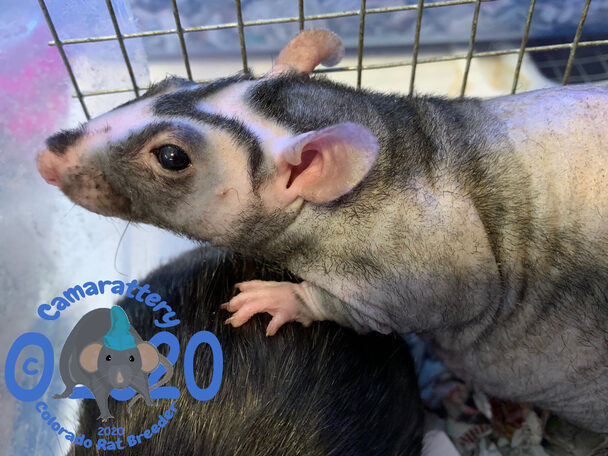 Patchwork have been around longer than I have been breeding. But the gene is bred more now than in past years. There are not many of them anymore so they are considered rare. One of the rarest varieties in fact. One breeder thought they were lost and they re-found them but in fact they had never left the pet trade.
Patchwork have been around longer than I have been breeding. But the gene is bred more now than in past years. There are not many of them anymore so they are considered rare. One of the rarest varieties in fact. One breeder thought they were lost and they re-found them but in fact they had never left the pet trade.
Patchwork is a recessive gene. Which is not related to any other genes in rats. They are a unique variety all to themselves. This variety constantly molts it hair into new unique patterns. Much like a Rorschach pattern that's ever changing. There is no other rat that looks like them, and it's very striking and eye catching.
A lot of breeders won't talk about the actual issues with the rats, in public. But they are not easy to breed for. The current lines in the world are slowly getting healthier, however most breeders still have issues. As far as Camarattery PW rats, we have bred all of the health issues out of them. In other places though PW have problems birthing, carrying litters, and develop eye issues such as infections, losing eyes to infections before weaning. Some die before they even wean. And this can be linked to immune system issues as they have a hard time fighting off the infections. If a breeder can raise them past weaning, things seem to go well after that. However saying that, many breeders are not bringing in new blood into the lines and are constantly inbreeding and line breeding. Which normally is a good thing. But when you have serious issues in a line this does nothing to get rid of the issues. Instead it just keeps the issues in the line and cements it as an issue for future generations. Patchwork rats need new blood being brought in all the time and a good outcrossing to get rid of the issues. This is what we did and saw great results. These problems are issues that PW have been facing for years, and the reason people slowed down on breeding them. Breeders got frustrated with it and moved onto other types of rats to breed since these issues are difficult to work with. When PW started being bred more once again they were inbred by feeder breeders and the problems got worse than when we previously had seen. So some lines are not as far along as others. I know a few breeders are still working with them and working to make them better.
It's fun to see what the responsible breeders are doing with them. You can now see them in a variety of fun colors as new genes are bred in. I've seen a few types like pink eyed Marten & Albino, Agouti and Black. I will be posting updated pictures here every so often to show individuals that I have in my breeding program.
The level of difficulty to breed Patchwork rats and the limited number of them as a result, does make them cost a little bit more.
The Fur Pattern Beyond The Face
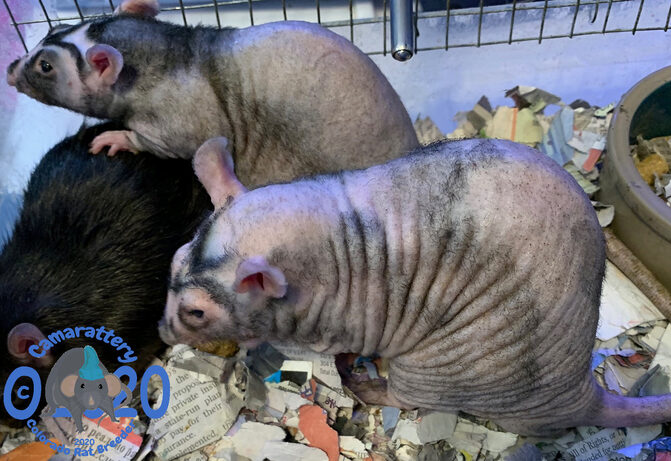
I keep seeing photos of Patchworks from the front view of the face. But it's not all about the face. PW have ever changing fur patterns on their entire bodies, and it's interesting to look at the whole animal. One minute they look one way, and a few short weeks later they look like a totally different individual. Don't you wish you could have a complete makeover all the time. How fun!
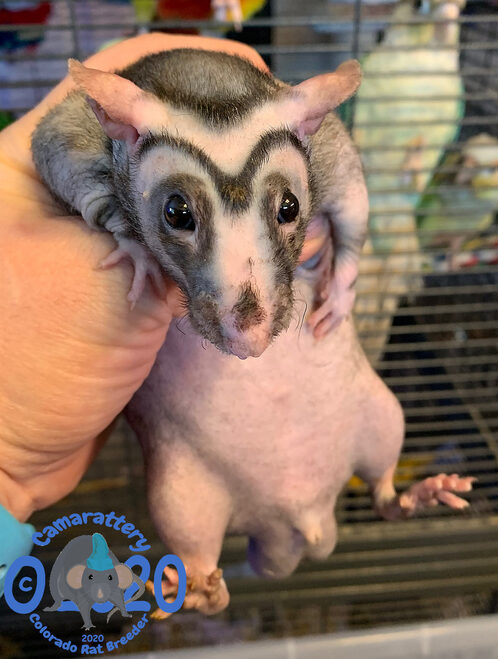 |
Some of our boys in August of 2023
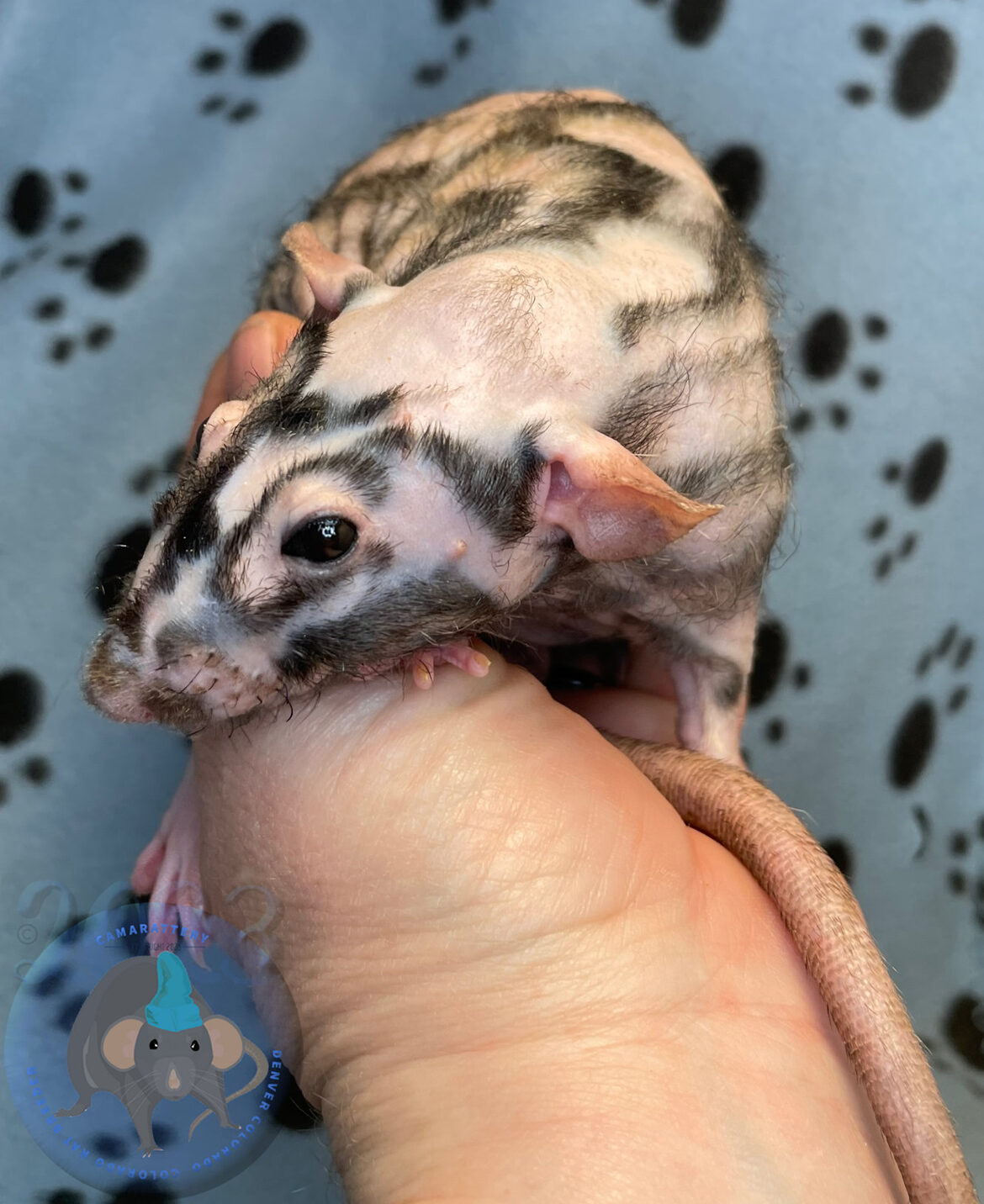 | 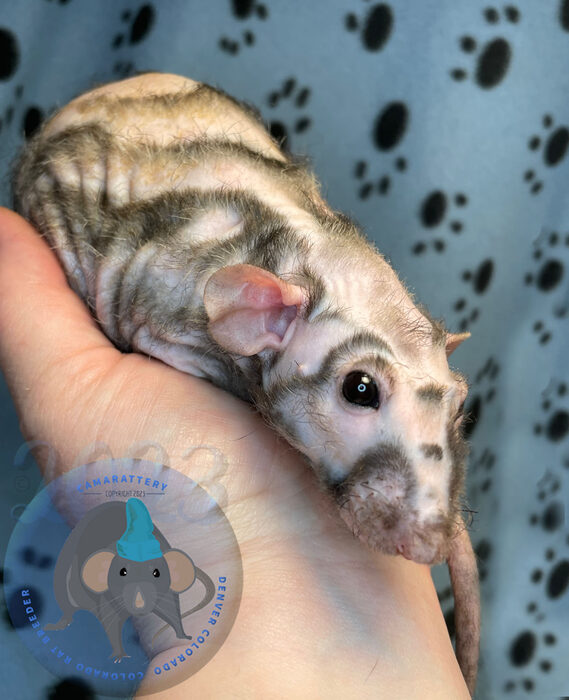 |
| Black | Chocolate |
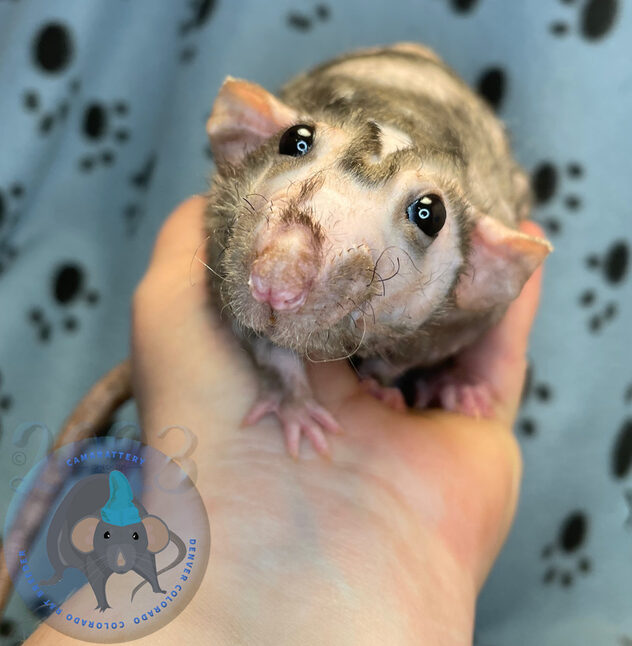 | 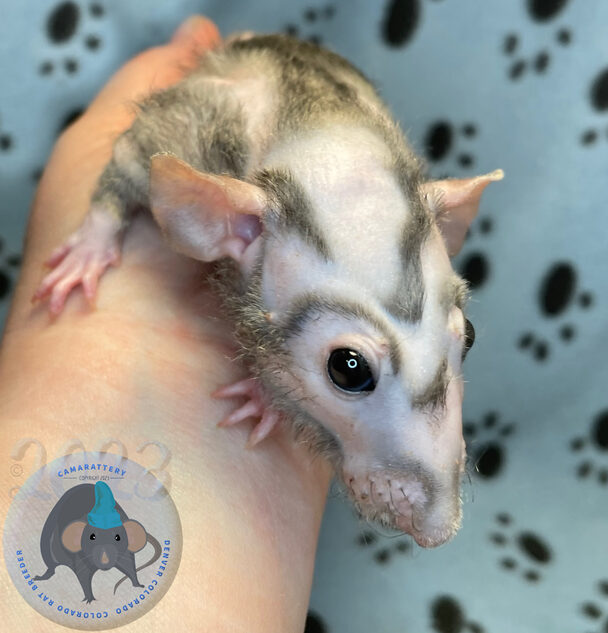 |
| Chocolate | Russian Blue |


 Download the Taptalk app on your phone!
Download the Taptalk app on your phone!